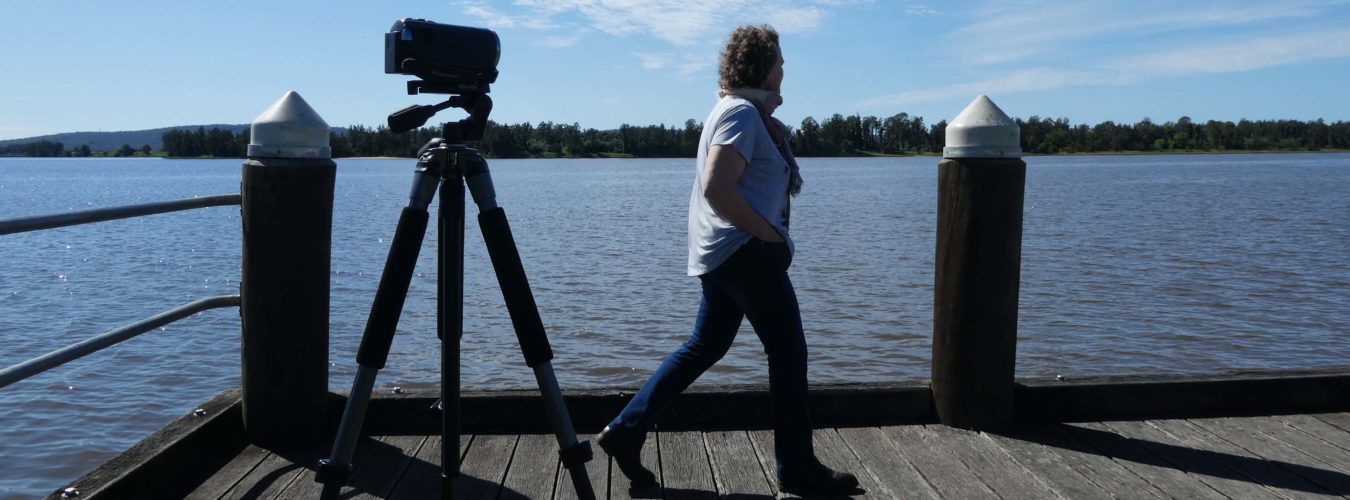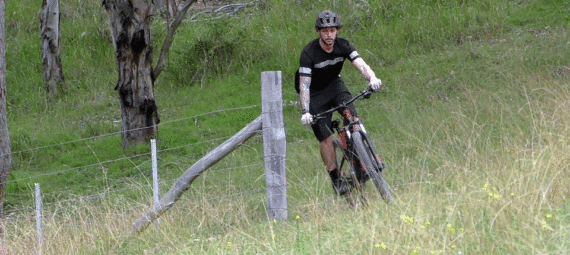We arrived in the historic Hunter Valley town of Dungog just a few weeks into the easing of COVID19 travel restrictions in NSW. We expected to find a town still suffering after three years of drought and the more recent pandemic lockdown.
Things have been difficult but remarkably this picturesque town on the Williams River is instead undergoing something of a renaissance. The main street felt busy and vibrant. It’s cafes and restaurants were as full as social distancing rules allowed them to be.
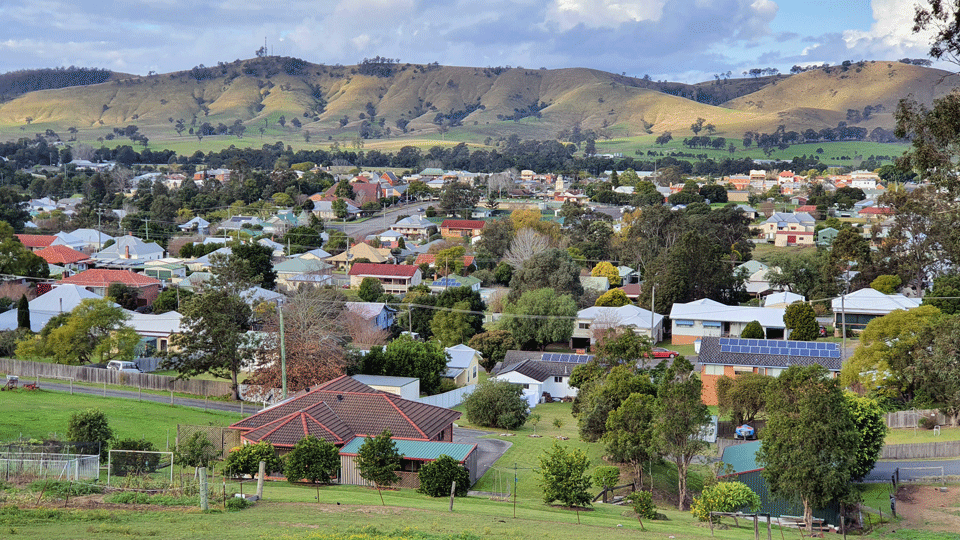
Accommodation was mostly booked out. Yes, there were a few empty shops, and some facilities like the historic James Theatre and the local museum were yet to reopen. However, there were strong signs of confidence in the future, including renovation of the 1930s Art Deco Royal Hotel which is likely to become an important tourism asset when the overhaul is complete.
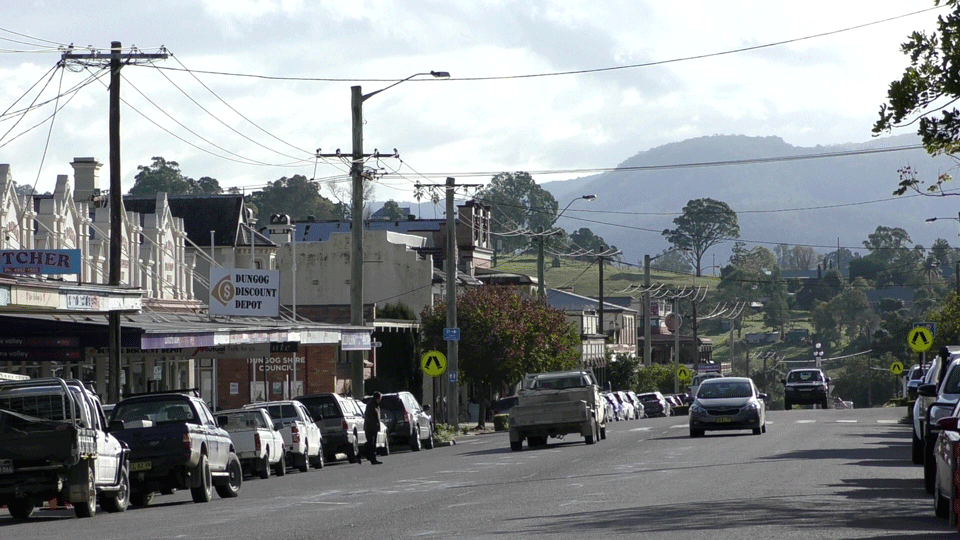
The pretty rural service town of Dungog is on the verge of something bigger and it is at least partly being driven by the development of Dungog Common into a mountain biking destination known as Ride Dungog . The 263 hectare (650 acre) common has 22km of trails with more in development. But more about that later.
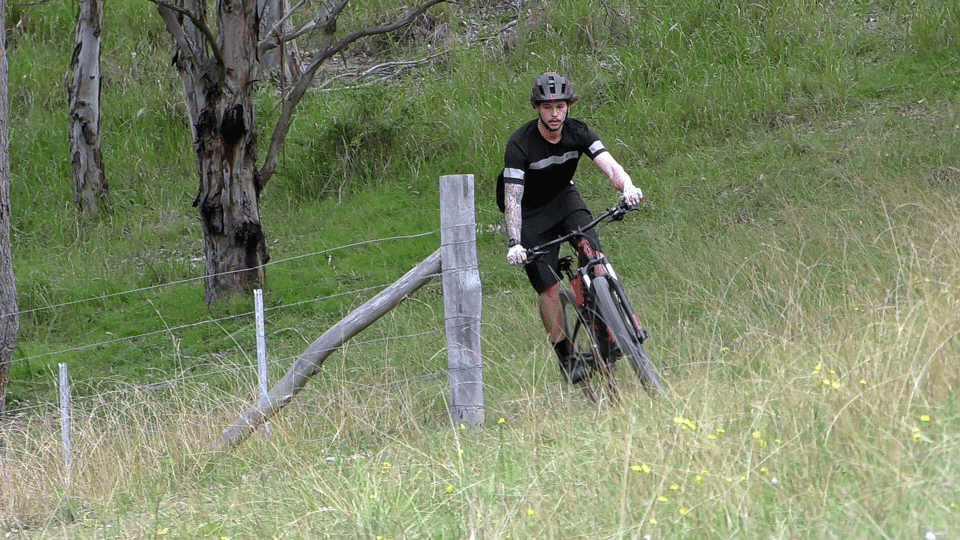
WHAT WE LOVED
We loved the picturesque location surrounded by rolling hills and farmland. We loved the historic streetscapes with so many well-preserved old buildings. We enjoyed the very friendly locals who were always up for a chat and made us feel welcome. We loved the good choice of places to eat, and the well-developed art scene and the variety of interesting shops to browse.
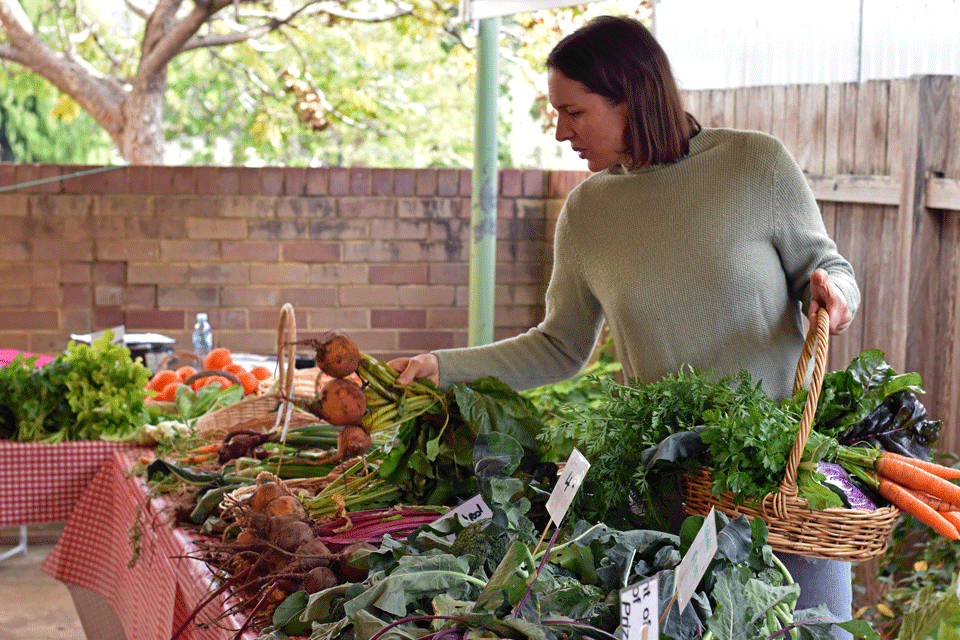
WHAT WE DID
Local produce
If you’ve got a yearning for super fresh local produce, keep some time on your Saturday morning free for the Local Growers Stall. Every week you will find different seasonal vegetables, fruit, herbs, cut flowers, honey, eggs, and seedlings from local farmers, market gardeners and back yard growers. Much of the produce is fully organic or chemical free.
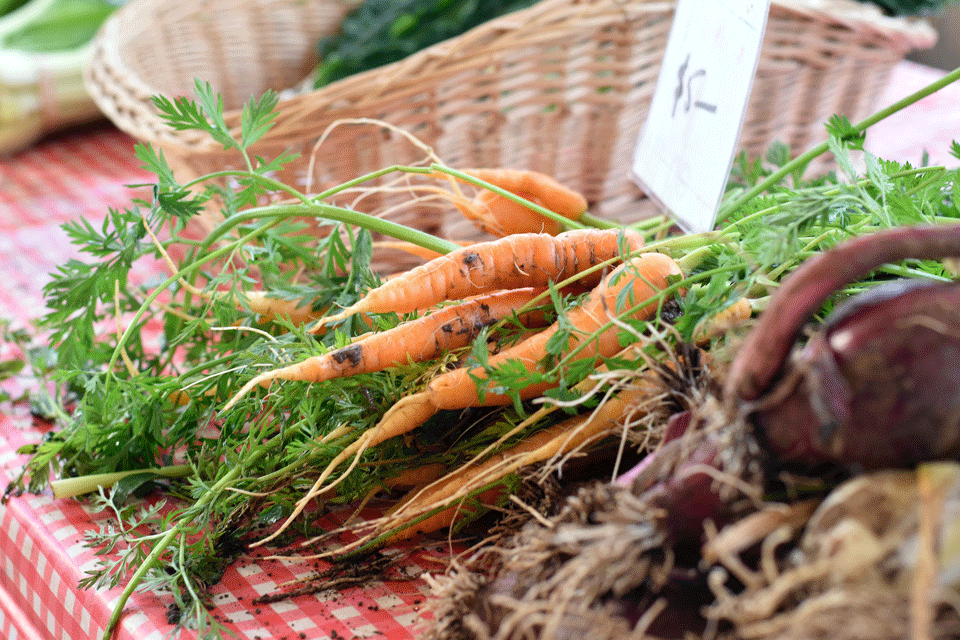
Bring your own shopping bags. Nearby you will find Fosterton Farm Bakery bread van. Organisers have gone out of their way to manage social distancing requirements with a ticketing system and just a few people allowed in at a time.
Homewares and clothing
For a small country town, Dungog punches above its weight for charm. We called into Chic and Antique (211 Dowling Street) which is housed in one of the town’s oldest buildings. The building began life as an inn around the 1840s.
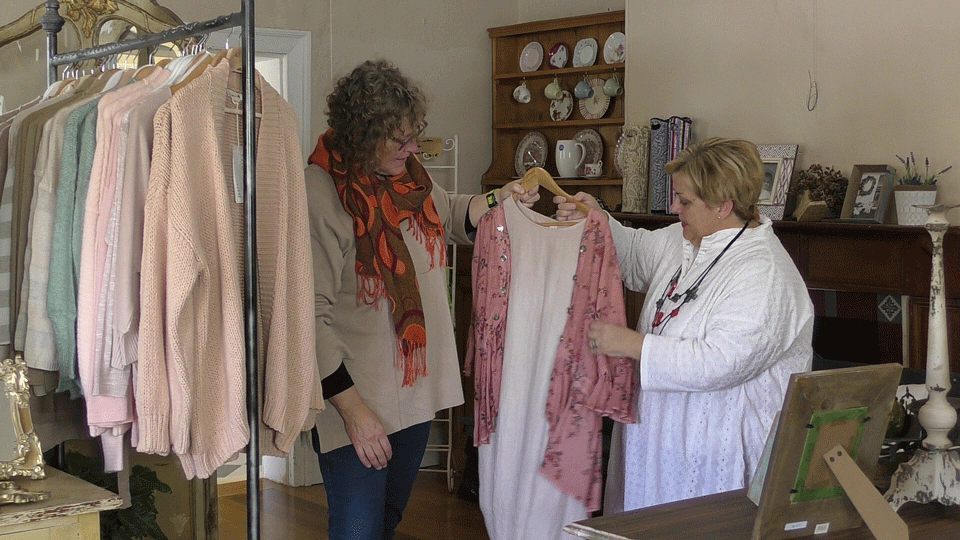
Today it houses a completely different kind of business – selling antiques, vintage wares, upcycled furniture, women’s linen clothing, shoes and accessories. Proprietor Chris Ahearn is an enthusiastic supporter of Dungog. She moved there several years ago and says she wishes she’d done it sooner.
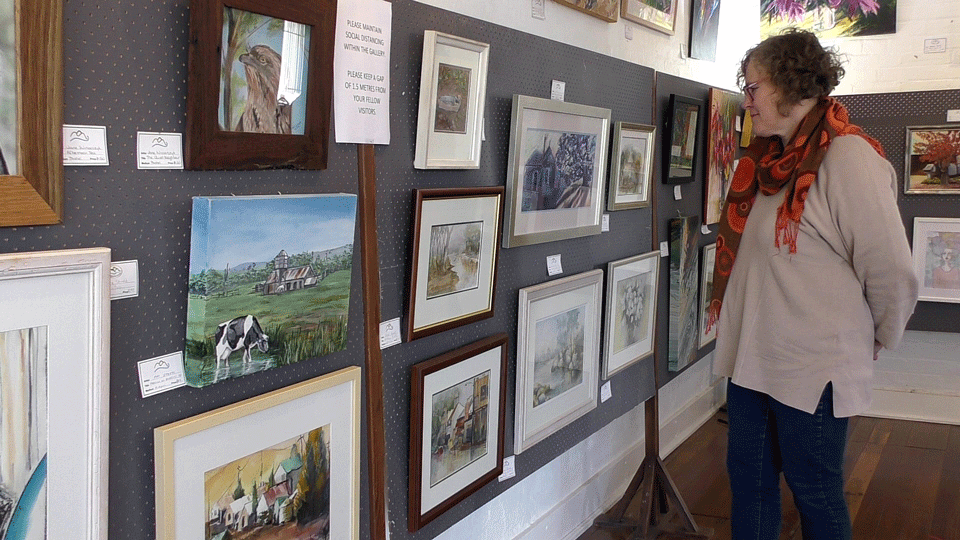
Artworks
Dungog Art Society has a gallery right across the road at 266 Dowling Street in yet another lovely old building. It’s a hub for the local art community with works in many styles and mediums. They’re all for sale and the gallery is run by volunteers. Well worth calling in.
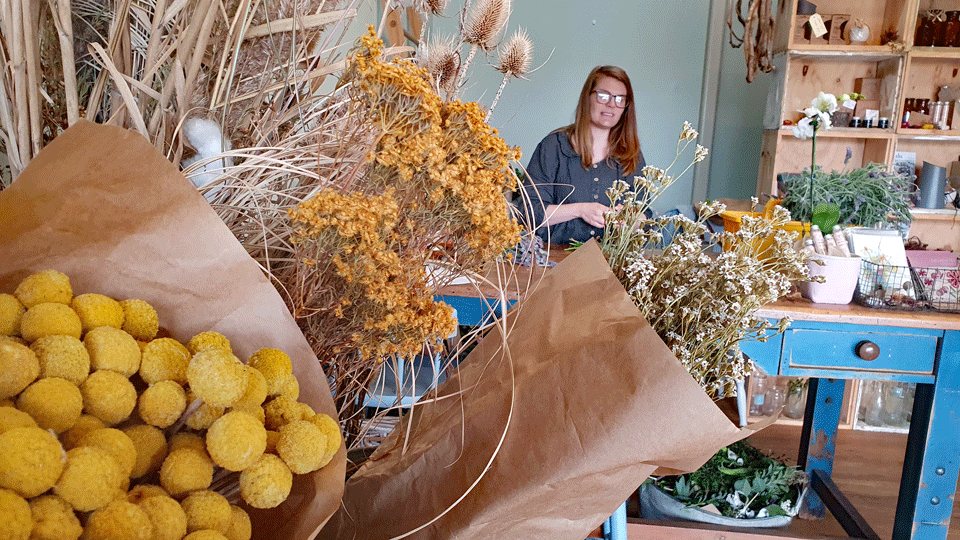
Bloomin’ marvellous
We wandered into The Flower Shop (open Thursday, Friday, and Saturday) to check out the gorgeous local blooms and gift selection. The seasonal flowers come from Four Acre Farm which specialises in cut flowers, garlic and other produce grown organically. The farm and the shop are run by Dominique Northam and Tom Christie who left behind the city of Newcastle seven years ago for a very different (but better) life in Dungog.
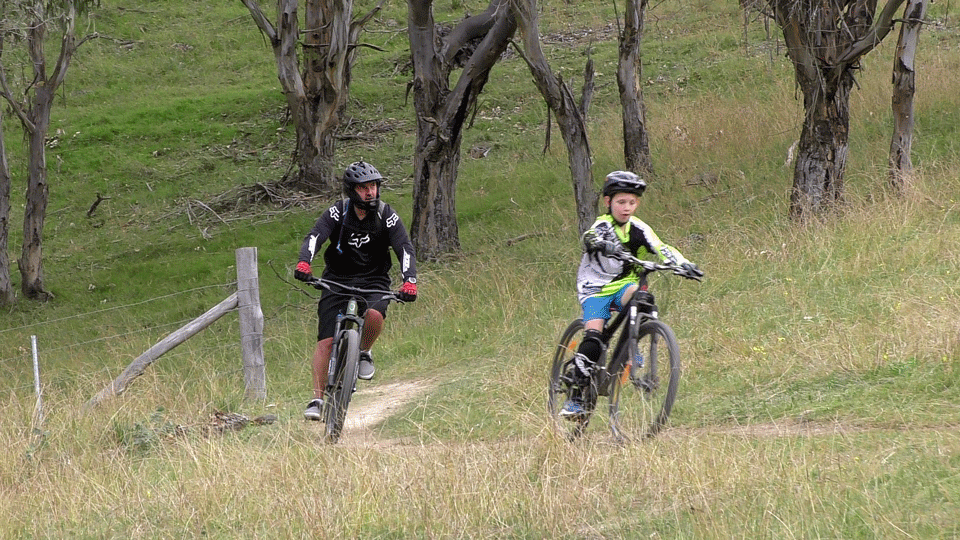
Ride Dungog Common
We are not mountain bikers by any stretch, but having seen Dungog Common we’re thinking we really should start. So many people having an awesome day out. Kids riding the fun track, hurtling over the jumps. Mums and dads heading down the slopes with their kids, threading their way along the tracks through the tall timber.
jkhadjkadhjlkfljdh
The 22km of trails are graded easy, intermediate, and difficult to cater for a range of skills and preferences. The 1.2km groomed flow track for hard-core enthusiasts is a particular feature. On the day of our visit, the facility was packed with families and mountain bike enthusiasts of all ages and experience. Those same people were spending their money in Dungog’s cafes, restaurants, accommodation, galleries and shops.
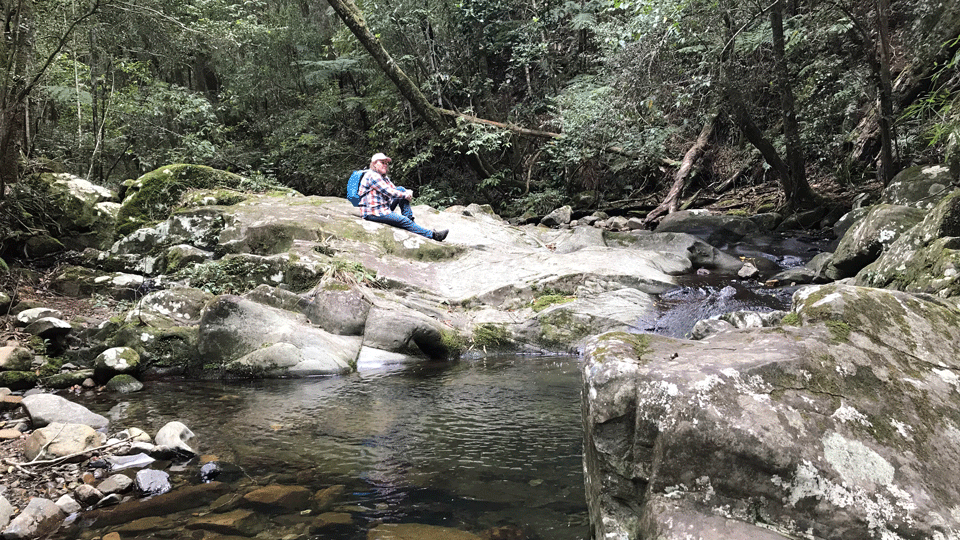
Bushwalking
You’ll be a bit spoiled for choice around Dungog. The town is the southern gateway to Barrington Tops National Park which is criss-crossed by fantastic walks. On a previous visit to Dungog we walked the Blue Gum Loop Trail which is about 4km through glorious blue gum forest and fabulous rainforest. It’s about 40km from town.
kljsdhfljkhdfjhdf
Closer is the Girriwa Loop Walking Trail which is also within Dungog Common. To be honest, we ran out of time to do this walk, but from all accounts it’s very pretty. To find the start of the track, drive past the entrance to the Mountain biking area and you’ll come to it on the left a little further on.
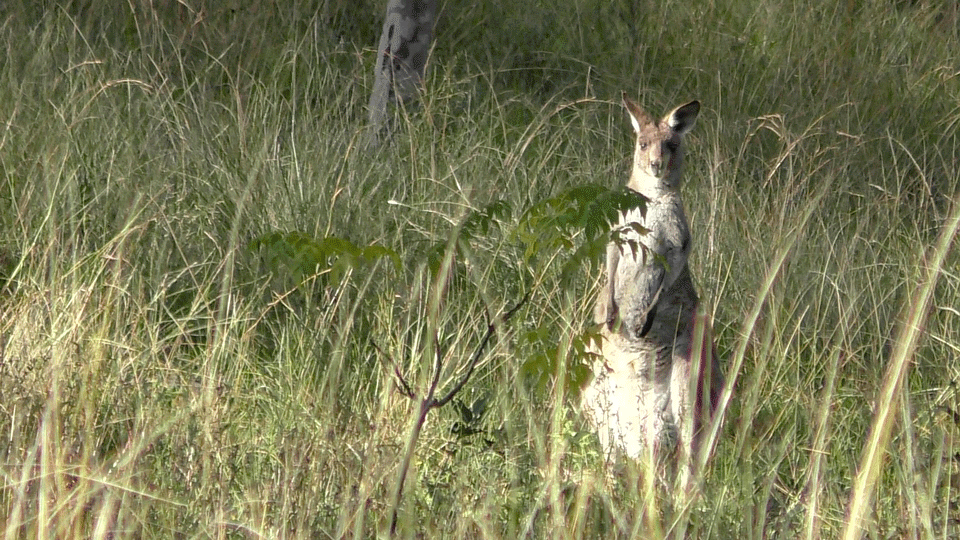
We’re told the track is well marked and you can expect to see plenty of wildlife (we saw mobs of kangaroos and birds galore around the common). We’ll be doing it for sure on our next visit.
Explore the streets
The well preserved European history of the town is what gives Dungog much of its charm. The town dates from the 1830s. Most of the notable architecture is in Dowling and Brown Streets.
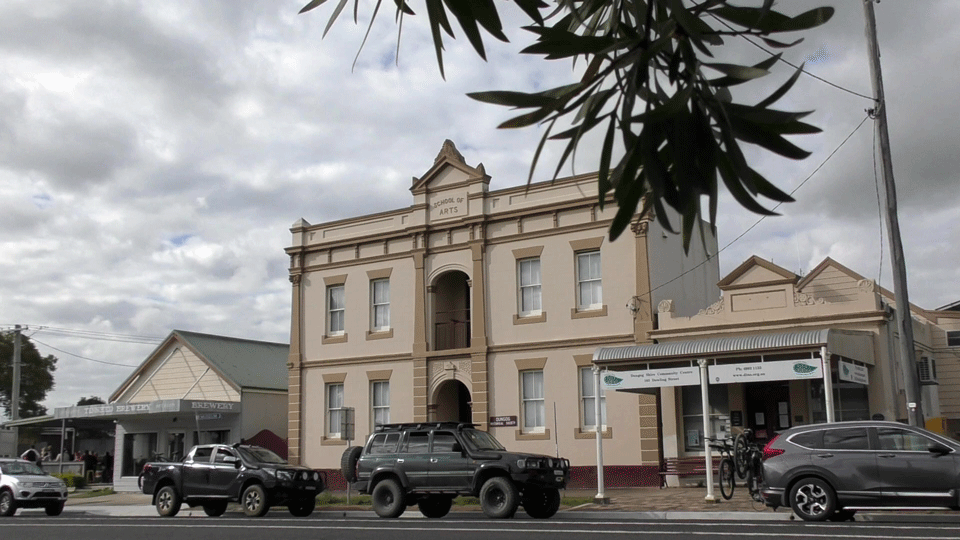
There’s some gorgeous examples and Dungog Historical Society has helpfully created plaques which they fixed to each significant building and these tell their stories. Much has been written about the buildings of Dungog but among our favourites were:
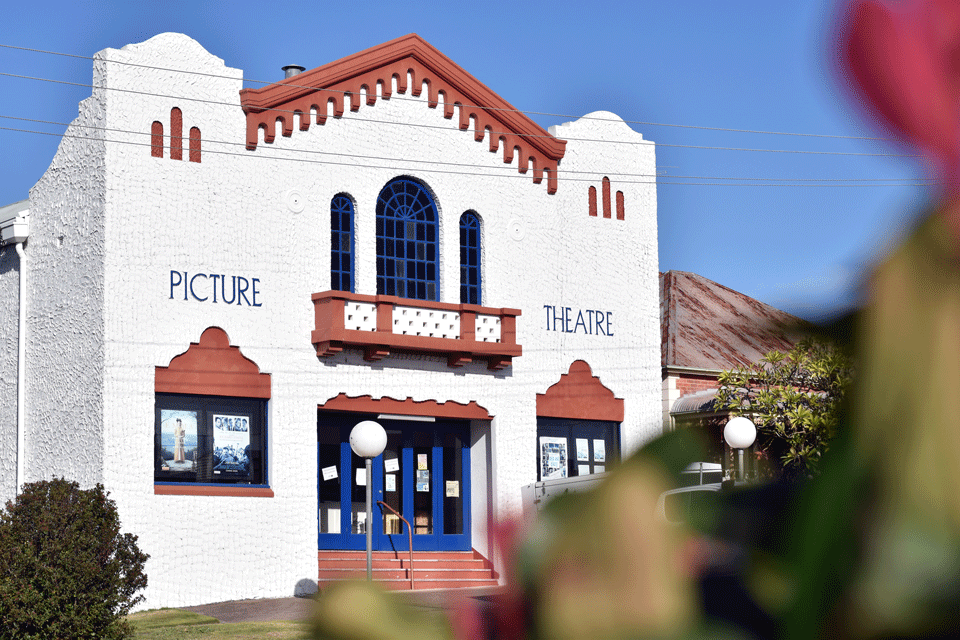
James Theatre
The distinctive James Theatre is said to be the oldest purpose-built cinema still operating in Australia. It was set up as an outdoor cinema in 1912. By the 1930s the current unusual Spanish-style facade was added. It’s now owned by Dungog Shire Council and hosts movies and a variety of other functions.
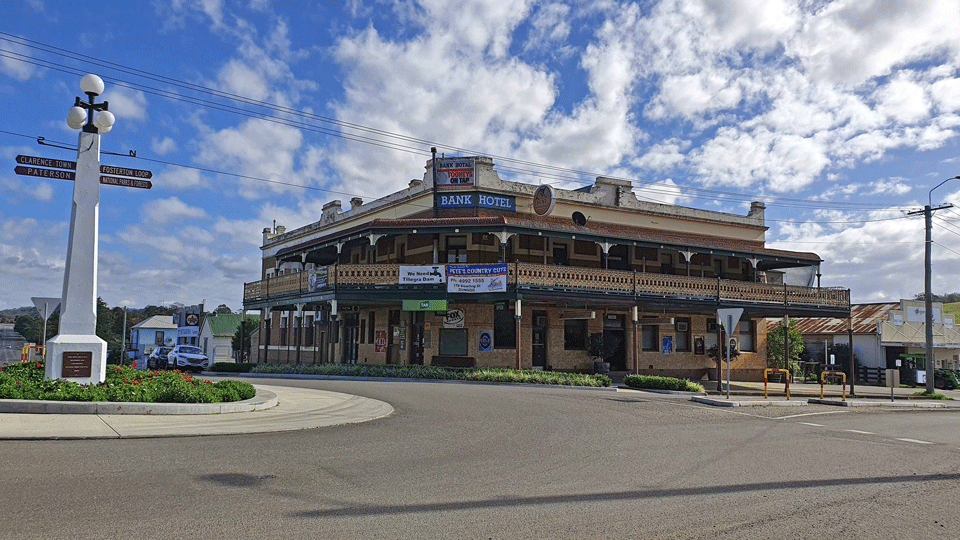
Bank Hotel
The splendid Bank Hotel down by the river started life as a residence in 1876 before being converted to a 27-room hotel in 1891. Australia’s first Prime Minster Edmund Barton (MP for the Hunter electorate which included Dungog) addressed crowds from the balcony of this pub on March 15, 1901.
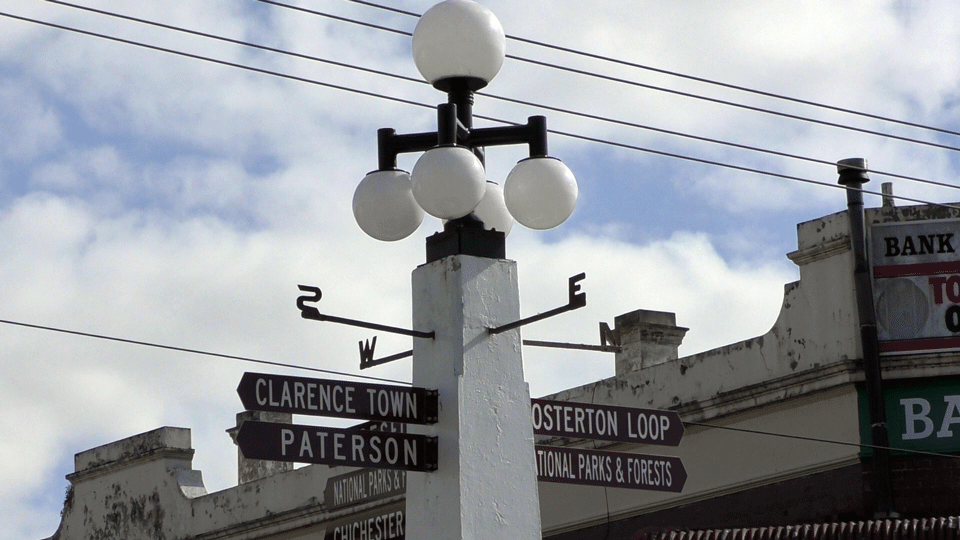
Together with a nearby obelisk, the pub forms one of the town’s best-known scenes. The obelisk was erected by the Dungog Tourist League in 1927, to direct tourists to the new Barrington Guest House and Chichester Dam. It’s been pointing tourists in the right direction ever since.
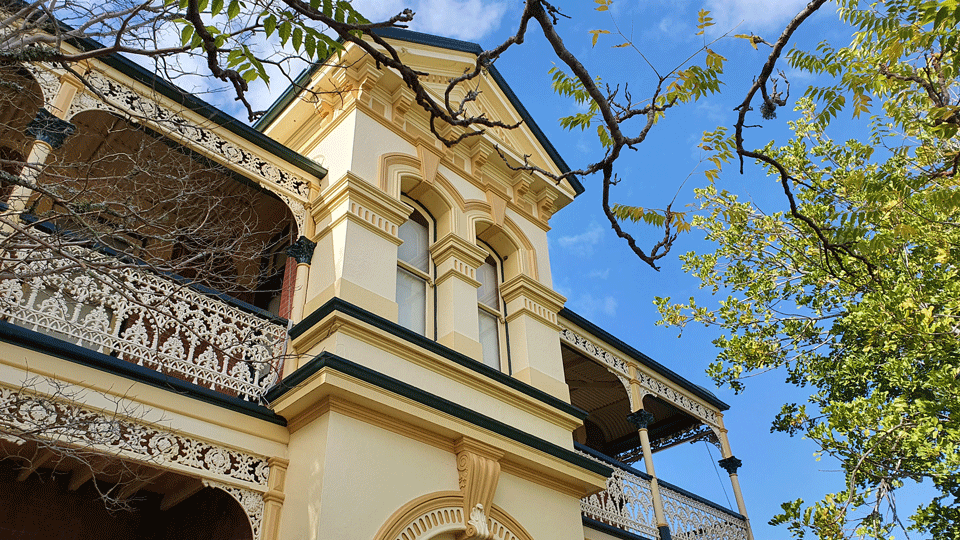
The actual bank
The building which now houses the National Australian Bank at Dungog is a beauty. It was built in 1884 for the now defunct CBC Bank and is described as a mixture of “grandeur and restraint” by the local Historical Society. It’s been a bank for all those years and points to the wealth and prosperity of that time.
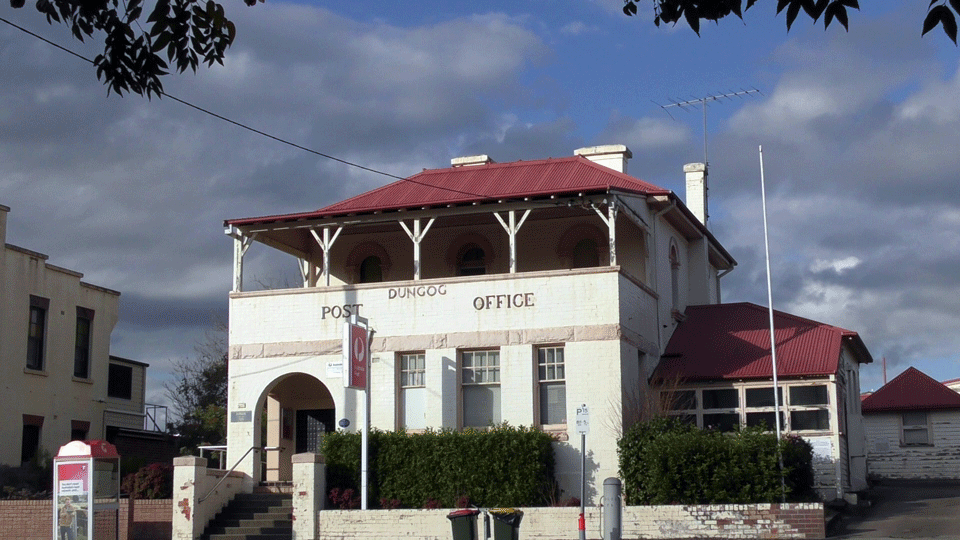
The Post office
As country town post offices go, this is a big one. It points again to a quite different time. It opened in 1880. It’s said that around the time of construction about 300 letters were posted from Dungog each week, and 38 received. We thought there’d be lucky to be 300 letters a year these days – but someone did tell us that COVID19 lockdown and online shopping had caused a dramatic increase in the number of parcels arriving there in 2020.
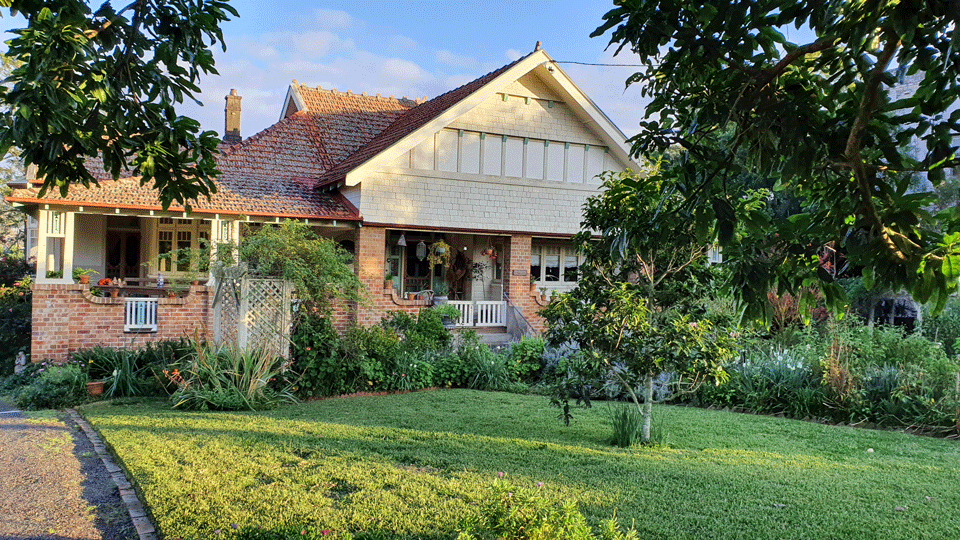
WHERE WE STAYED
We booked into a lovely late Federation style home in Dowling Street. Historic “Coimbra” was built in 1917 for a prosperous local stock and station agent. This beautiful old home has been faithfully restored.
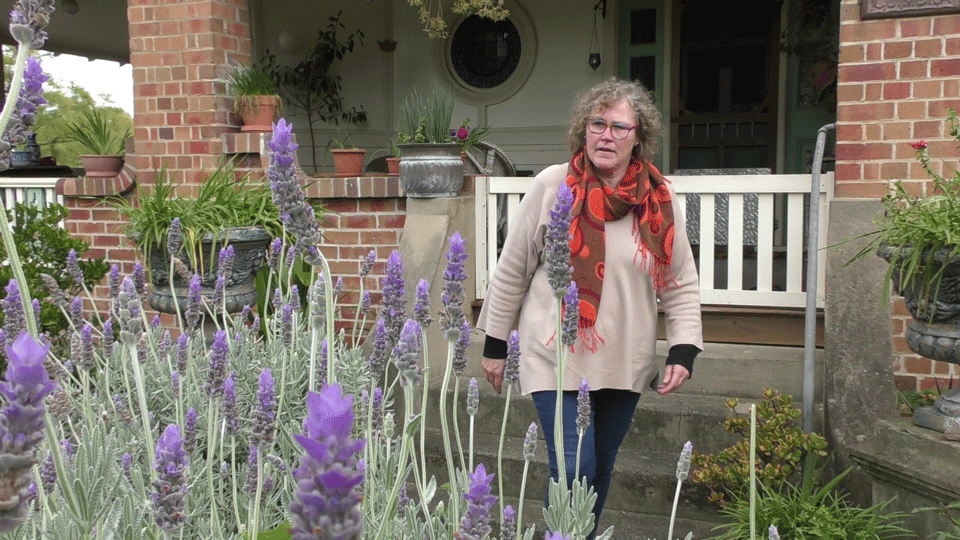
The self-contained accommodation was downstairs with private access and facilities. Owner Howard encouraged us to wander the large garden which must be a picture in the Spring. We thoroughly enjoyed out stay. Bed comfortable and warm. Kitchen and bathroom clean and well equipped.
WHERE WE ATE
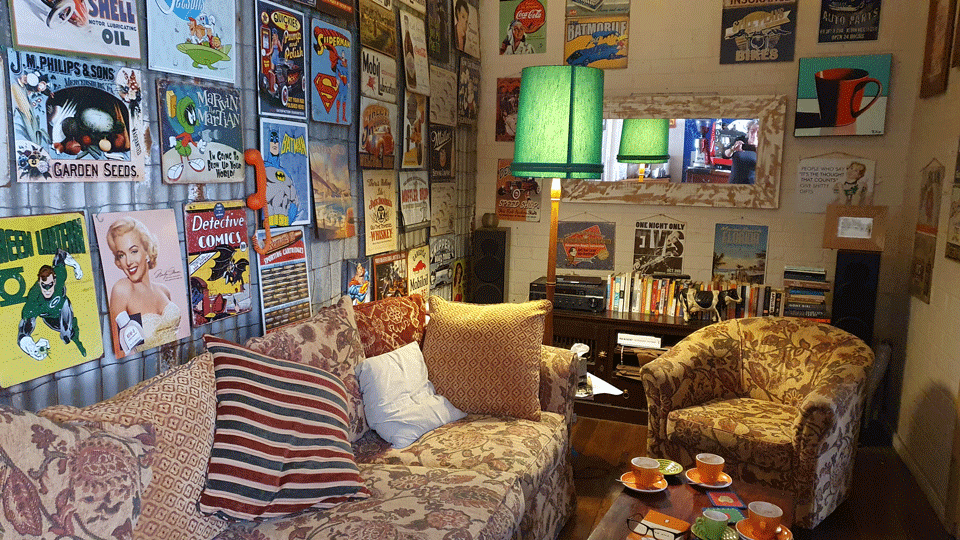
Coffee
Cafe Dungog got our vote for best coffee and cosiest setting for the weekend (admittedly we didn’t get a chance to try everywhere). The Cafe is small but very quirky and it was a joy to sit by the fire and talk with the friendly proprietor. It had a very cool vibe. You’ll find it at 94 Dowling Street. Dungog has many coffeeshops to choose from.
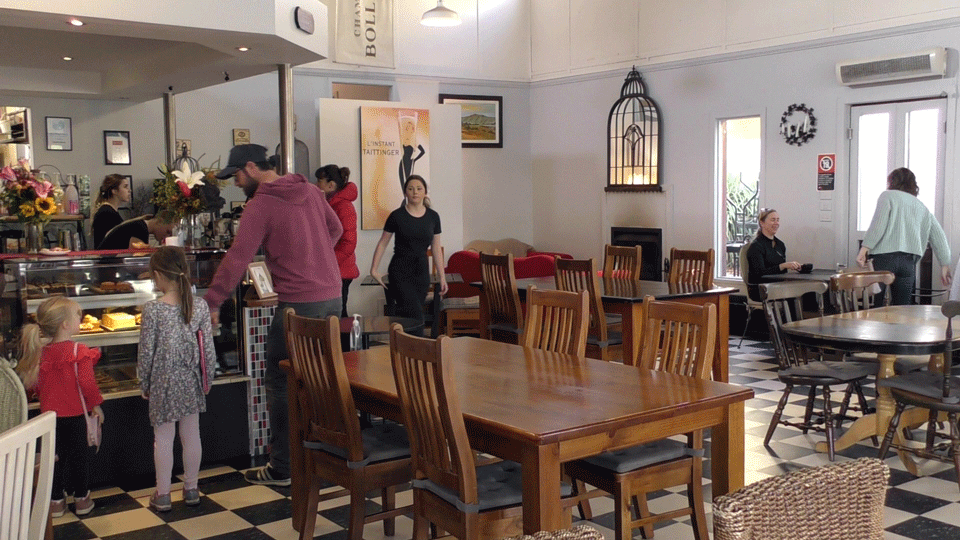
Breakfast
We called in at popular breakfast spot, Stella Bistro at 205 Dowling Street . It’s housed in a cavernous former hall built in the 1880s and extensively renovated in 1926. At one time it housed a skating rink. Friendly service and a good breakfast.
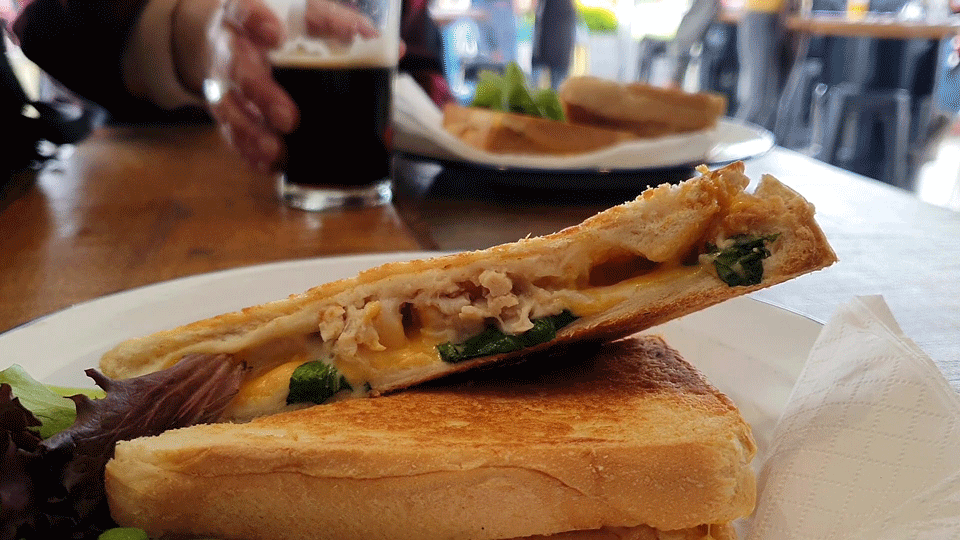
Lunch
Did someone say craft beer? Yes indeed they did, and so we headed to Dungog’s Tinshed Brewery in Dowling Street. There’s a large outdoor (covered) dining area which is perfect in these strange COVID19 times.
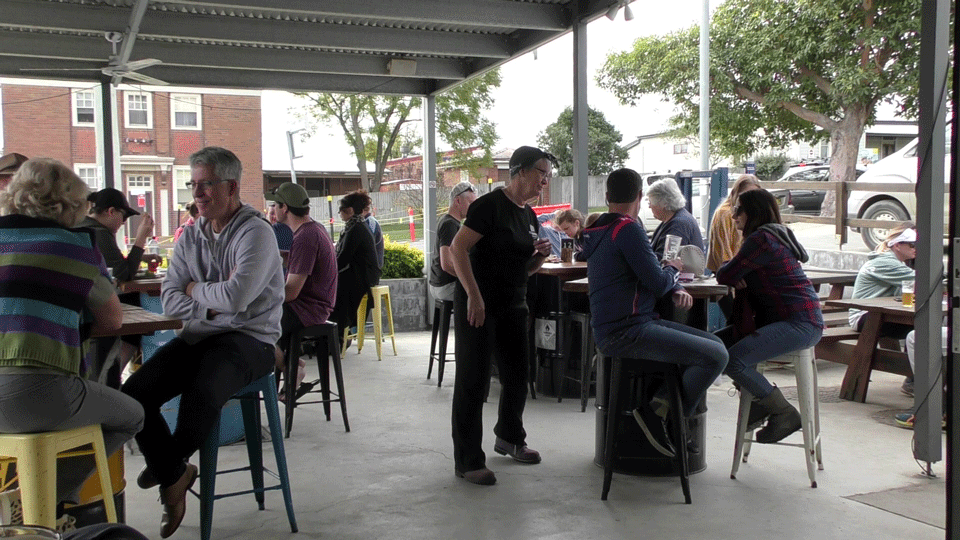
We tried some excellent locally brewed beers and were particularly taken with the Rustic Ale and the Tinshed Lager. When we were there they were still operating on a limited menu of scrumptious toasties – but they were the perfect accompaniment for the beer so there were no complaints from us.
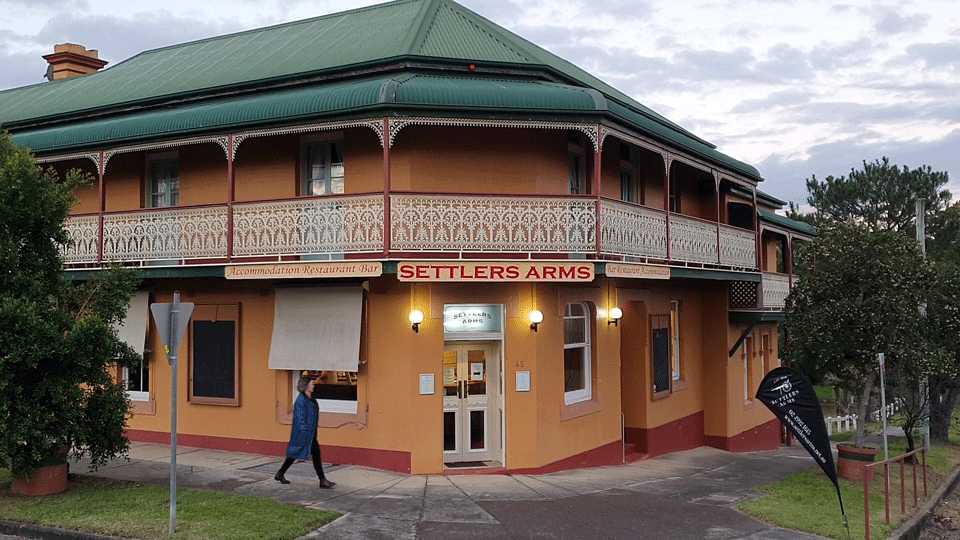
Dinner
We booked into the Settlers Arms for dinner. The bar and restaurant were just easing back into things after the COVID lockdown and social distancing was the order of the day.
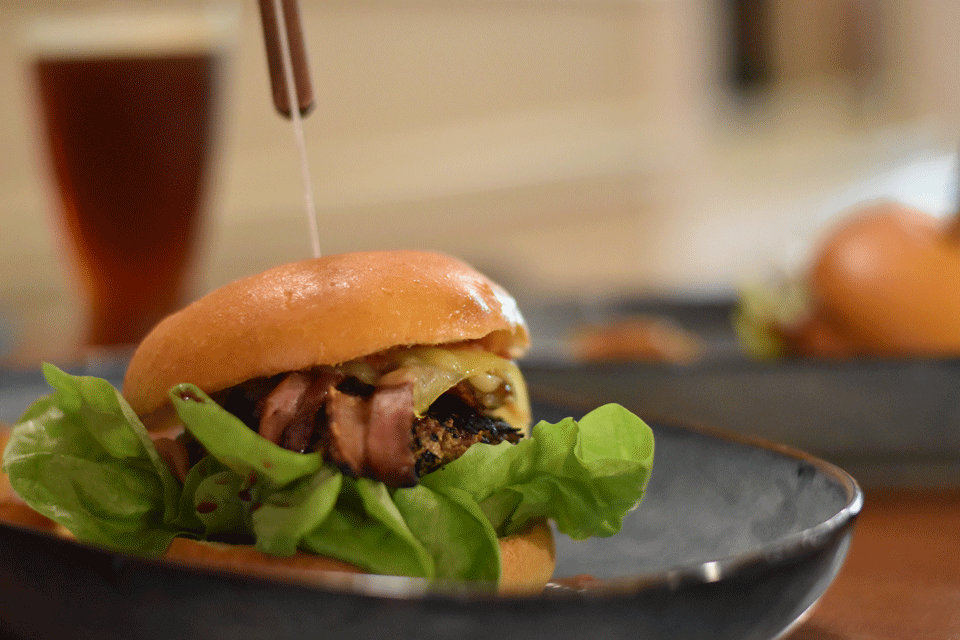
There was a good, but limited menu to choose from, and we enjoyed our burgers washed down with locally brewed beer on tap. The atmosphere of the historic old inn was a real plus (built in the 1850s) and there was a crackling fire in the corner.
